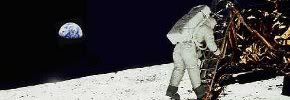No, this is patently false: while the SIVB made it to the Moon (sometimes) it was always violently crashed into it and had almost no fuel left. What made it to Moon orbit out of the original 3000 tonnes were about 45 tonnes composing of the CSM and LM.Sea Skimmer wrote: Did you just totally miss that the shuttle never orbits higher then about 400km, while Saturn V boosted that payload to the freaking moon?
What was deposited on LEO was a CSM spaceship, the lunar lander and the final SIVB stage with enough fuel for trans-lunar injection, or around 120 tonnes.
Yes, the useful payload of the Shuttle is small (duh). I was talking about the launch vehicle (granted, a hazy concept with the Shuttle), not the entire system. And what ends up in orbit after launch masses 112 tonnes,however you look at it.Sea Skimmer wrote:Efficient the shuttle is not. Nothing that puts so much spacecraft mass into orbit, only to bring it all back after two weeks could be. In fact the payload to an equivalent orbit is only about 25% that of Saturn V.
So? Everything that flied to orbit ever took engines with it. The orbiter is simply the second and third stage plus the retropack all rolled into one.Sea Skimmer wrote:Counting the orbiter as all payload is total nonsense, since it holds you know, all the engines that burn the fuel from the external fuel tank.

